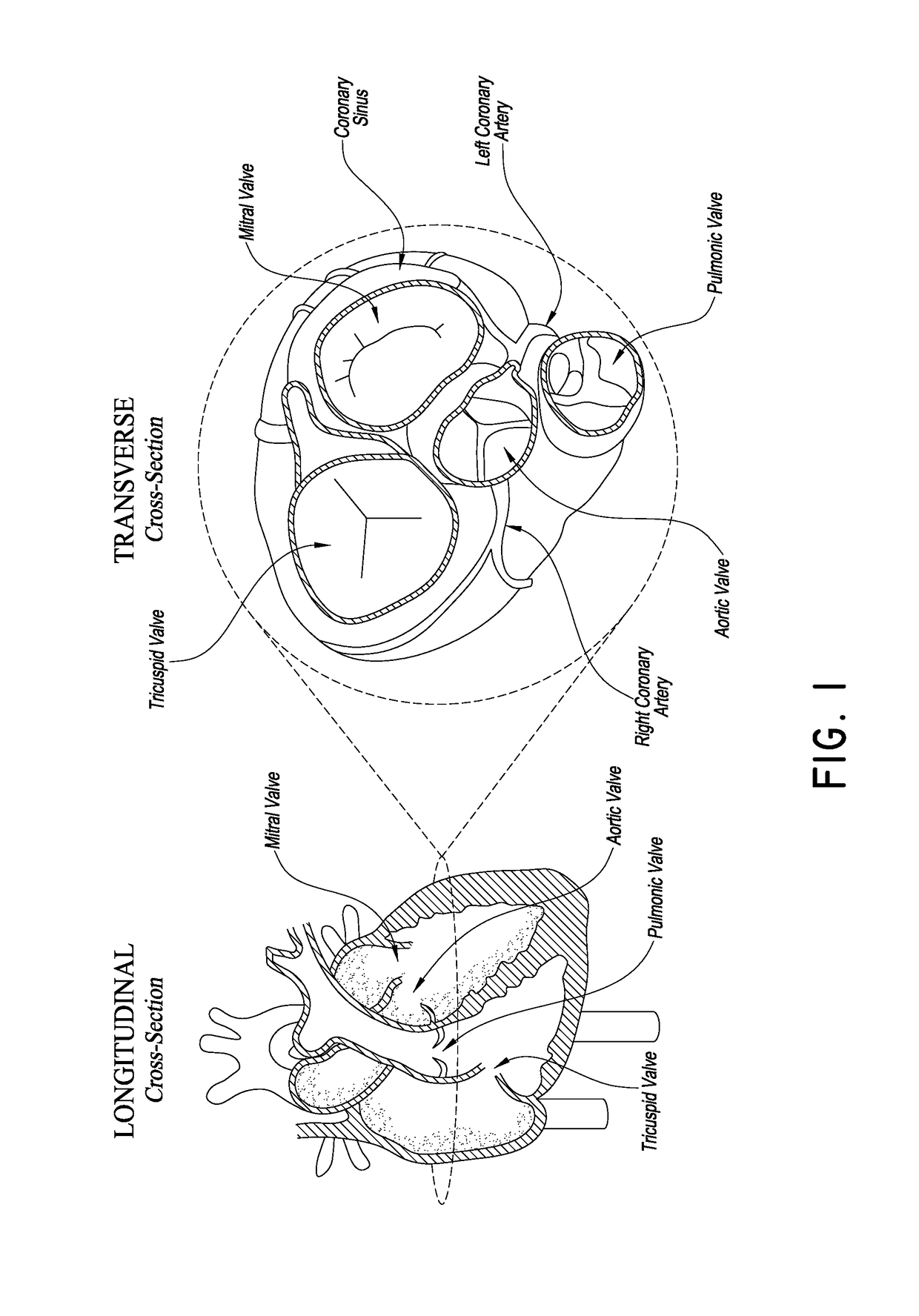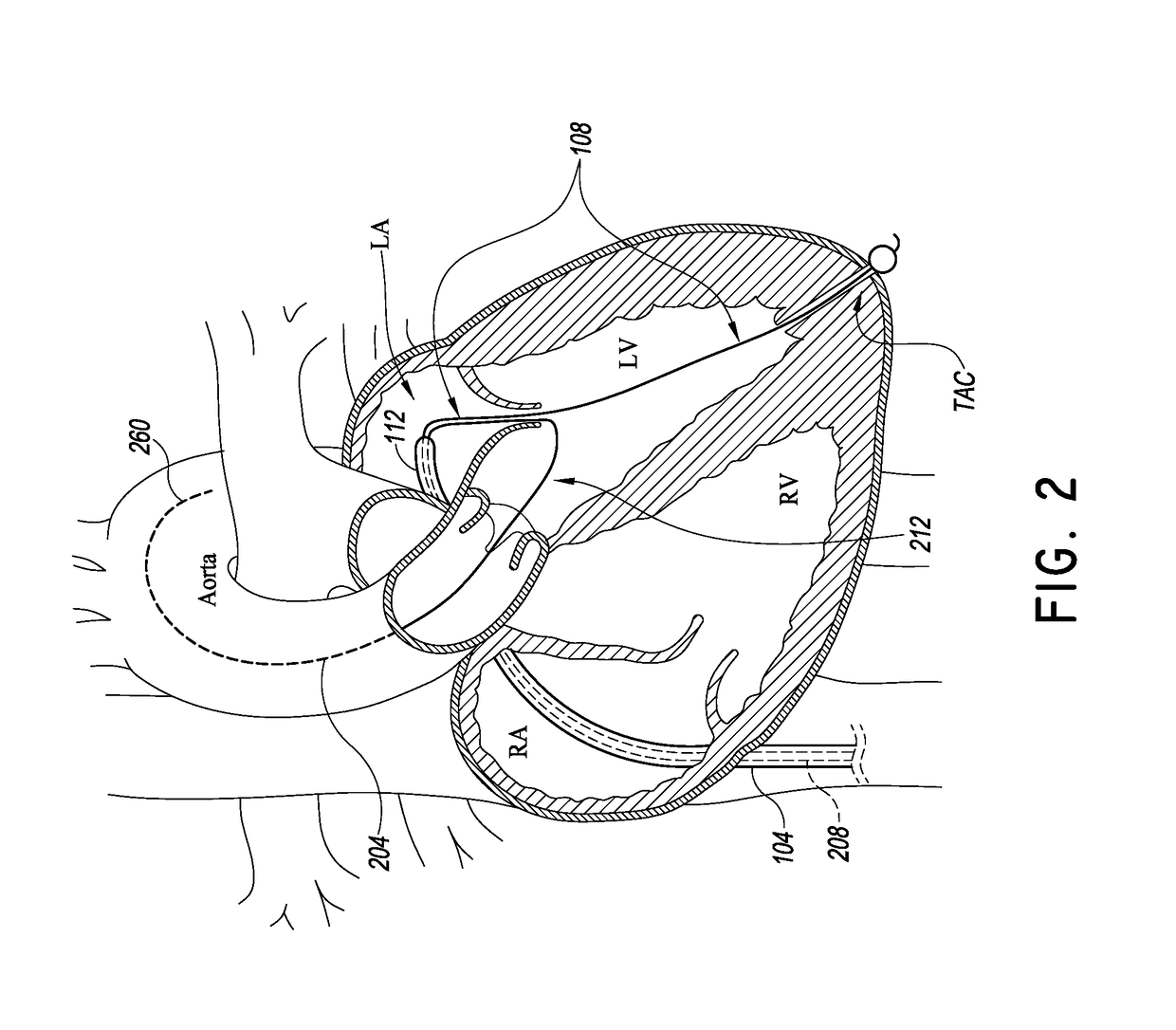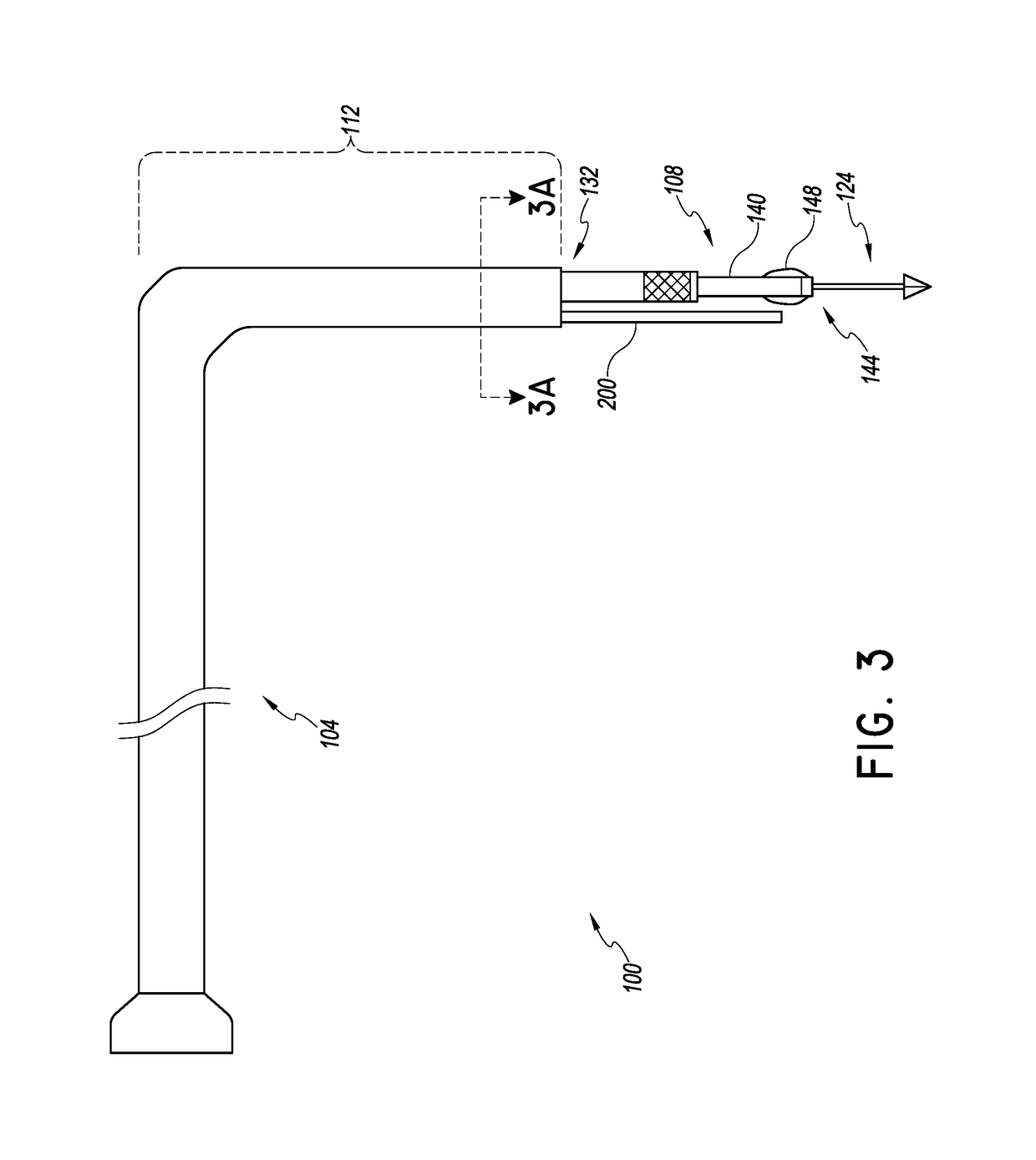Catheter based apical approach heart prostheses delivery system
a delivery system and apical approach technology, applied in the direction of heart valves, etc., can solve the problems of difficult piercing, difficult structure, complex devices such as aortic valves delivered using catheters, etc., and achieve the effect of sufficient long and flexible length and rapid placement of heart implants
- Summary
- Abstract
- Description
- Claims
- Application Information
AI Technical Summary
Benefits of technology
Problems solved by technology
Method used
Image
Examples
Embodiment Construction
[0023]FIG. 1 is a cross-section of the heart showing its primary anatomy. In particular, the heart is divided into four major chambers, i.e., right atrium RA, left atrium LA, right ventricle RV and left ventricle LV. The mitral valve MV separates the LA and LV. The leaflets of the mitral valve are connected to heart walls and actuated by chordae tendonae. The tricuspid valve TV separates the RA from the RV. Blood is pumped out of the heart into the systemic circulation through the aortic valve AV and to the pulmonary vasculature through the pulmonic valve PV. The aorta extends from the AV over the aortic arch and branches to smaller arteries serving major organs. The pulmonary artery extends from the PV to the lungs where blood is oxygenated. The vena cava gather venous blood from the systemic circulation and returns it to the RA.
[0024]As discussed above, various maladies affect these and other major structures of the heart. FIGS. 2 and 3 show a procedure and delivery system 100 and...
PUM
 Login to View More
Login to View More Abstract
Description
Claims
Application Information
 Login to View More
Login to View More - R&D
- Intellectual Property
- Life Sciences
- Materials
- Tech Scout
- Unparalleled Data Quality
- Higher Quality Content
- 60% Fewer Hallucinations
Browse by: Latest US Patents, China's latest patents, Technical Efficacy Thesaurus, Application Domain, Technology Topic, Popular Technical Reports.
© 2025 PatSnap. All rights reserved.Legal|Privacy policy|Modern Slavery Act Transparency Statement|Sitemap|About US| Contact US: help@patsnap.com



